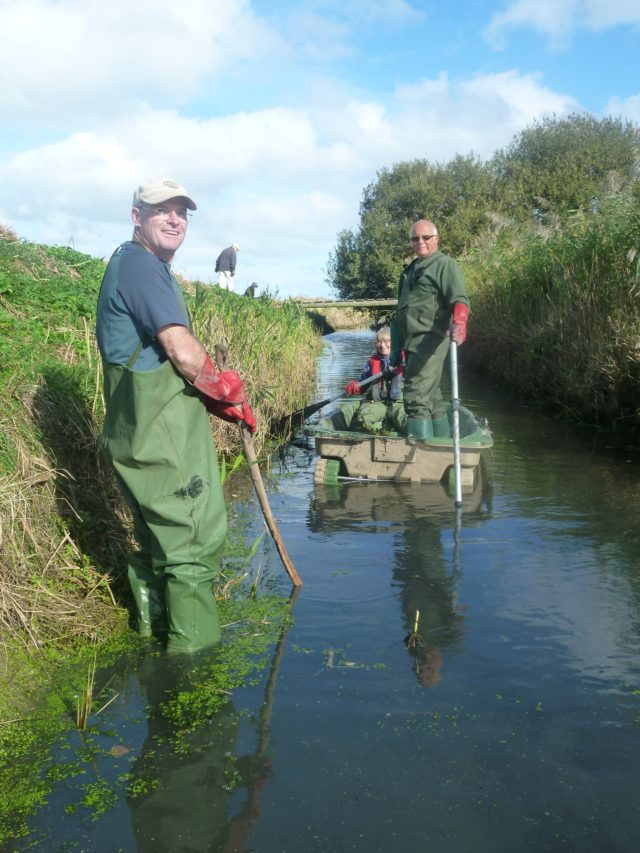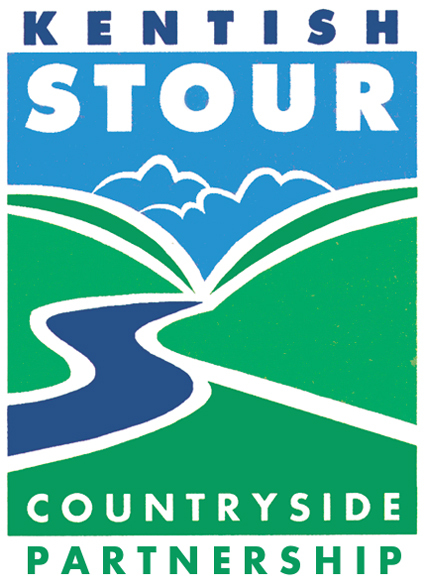Responsible Bodies
In addition to the KSCP, a number of other bodies are involved with managing the River Stour and its catchment. They have different responsibilities and remits, as outlined below.
Environment Agency
Internal Drainage Board
District and Borough Councils
Kent County Council
East Kent Catchment Improvement Partnership
Environment Agency
The Environment Agency is a non-departmental public body who are sponsored by the Department for Environment, Food and Rural Affairs (DEFRA). The Environment Agency is the main body in charge of the maintenance of the River Stour as well as monitoring its water levels, quality, resources, conservation and ecology. The Environment Agency states that they have a duty to “promote the conservation of the water environment, the natural beauty of rivers and wetlands and the wildlife that lives there”. This role also allows them to assess any proposed works adjacent to main rivers and the environmental impacts they may have. They are also responsible for managing the risk of flooding from the River Stour, co-ordinating the development of Local Flood Risk Management Strategies. Some of their work includes; weed cutting to maintain the natural balance of the ecosystem, strict monitoring of building or maintenance planned on river bank or flood plains and maintaining or implementing flood defences where applicable.
Kent Prepared
The EA has a greater awareness of flooding risks in the County and in response the Kent Resilience Forum has been set up.
This is to ensure agencies and organisations plan and work together, with a co-ordinated response to flooding emergencies which pose an increasing risk.
Those involved in the Kent Resilience Forum work together to ensure that, if and when a flooding emergency does occur, we are prepared to respond to it together and minimise any impact.
River Stour Internal Drainage Board
The River Stour Internal Drainage Board (IDB) is a public sector organisation which is responsible for land drainage in the River Stour area, as well as flood protection. The IDB works on behalf of the Department for the Environment, Food and Rural Affairs (DEFRA) to reduce flooding on agricultural, residential and industrial land. Board members are appointed by district councils and elected by land drainage ratepayers. In order to maintain water levels at a safe and suitable level the IDB carries out an annual programme of maintenance works.
We produced a Biodiversity Action Plan for the IDB in 2010 and surveyed their entire network of over 200 watercourses over the following 5 years. During these surveys we recorded wildlife habitat, species of conservation interest and physical features. The data generated was then used to create a set of management recommendations for each watercourse which would protect habitat for many key species, while maintaining their primary function of drainage and irrigation. Since 2015, we have been carrying out follow-up surveys to find out what effect our recommendations are having. We have also worked on several enhancement projects, including the manual removal of invasive Parrot’s Feather from ditches at Wade Marsh – pictured below.

District and Borough Councils
The district councils within the River Stour’s catchment area play key roles in planning flood risk management for their area as well as carrying out management works on parts of the River Stour and minor watercourses. Working alongside other bodies, especially the Environment Agency, district councils work together to ensure that risks are effectively managed.
Ashford Borough Council website
Canterbury City Council website
Dover District Council website
Kent County Council
Kent County Council is the Lead Local Flood Authority (LLFA) for Kent so consequently carries out the following functions-
- Using Flood Investigation Reports to investigating flooding
- Keeping a register of significant structures and features of rivers such as sluice gates and flood banks and using this information to designate new features when needed
- Regulating ordinary watercourses that do not fall under the IDB drainage districts
- Encouraging sustainable drainage.
- Delivering a Local Flood Risk Management Strategy for Kent. In this document the sources of local flood risk, items listed above and interactions between the sources and other types of flood risk are addressed.
Kent County Council is also the Highways Authority so is responsible for monitoring drainage of highways.
As the emergency planning authority in Kent, Kent County Council is responsible for preparing a contingency plan which details how emergency responders will respond to flooding, including the preparation of multi-agency flood plans for each district and borough in Kent.
East Kent Catchment Improvement Partnership
The East Kent Catchment Improvement Partnership is a group made up of organisations who work together to manage and improve the catchment area of East Kent. The geographic coverage of the partnership includes the Dour and the Oyster Coast Brooks, neither of which are in the Stour Catchment. The partnership is co-hosted by KSCP – who chair the CIP – and South East Rivers Trust (SERT).
The East Kent CIP brings together partners (co-deliverers) to work collaboratively, applying the catchment based approach to improve the health of surface and ground water bodies.
The aim of the East Kent CIP is to improve the local water environment so that there are multiple benefits for society. These include:
- Increasing wildlife habitat
- Water resources (surface and ground water) are safeguarded
- Reduce flood risk
- Sustainable farming and water-based economic activity such as tourism
- Improving and enhancing recreation opportunities (access, fishing, boating)
- Cleaner bathing beaches and shellfish areas
- Better chance to adapt to climate change.
The partnership wishes to include local organisations, communities and businesses in the identification of realistic, sustainable solutions, securing funding and carrying out agreed actions. In order to fund the activities the CIP will look for long term self-sustaining funding.
The CIP has produced a Catchment Management Plan which can be downloaded below.
Stour Catchment Management Plan – 2021
East Kent Catchment Improvement Plan Summary Ongoing and Future Projects 2021
East Kent Catchment Improvement Plan Summary Ongoing and Future_Projects Feb 2024
Water Framework Directive Classifications in the Stour Catchment 2019
